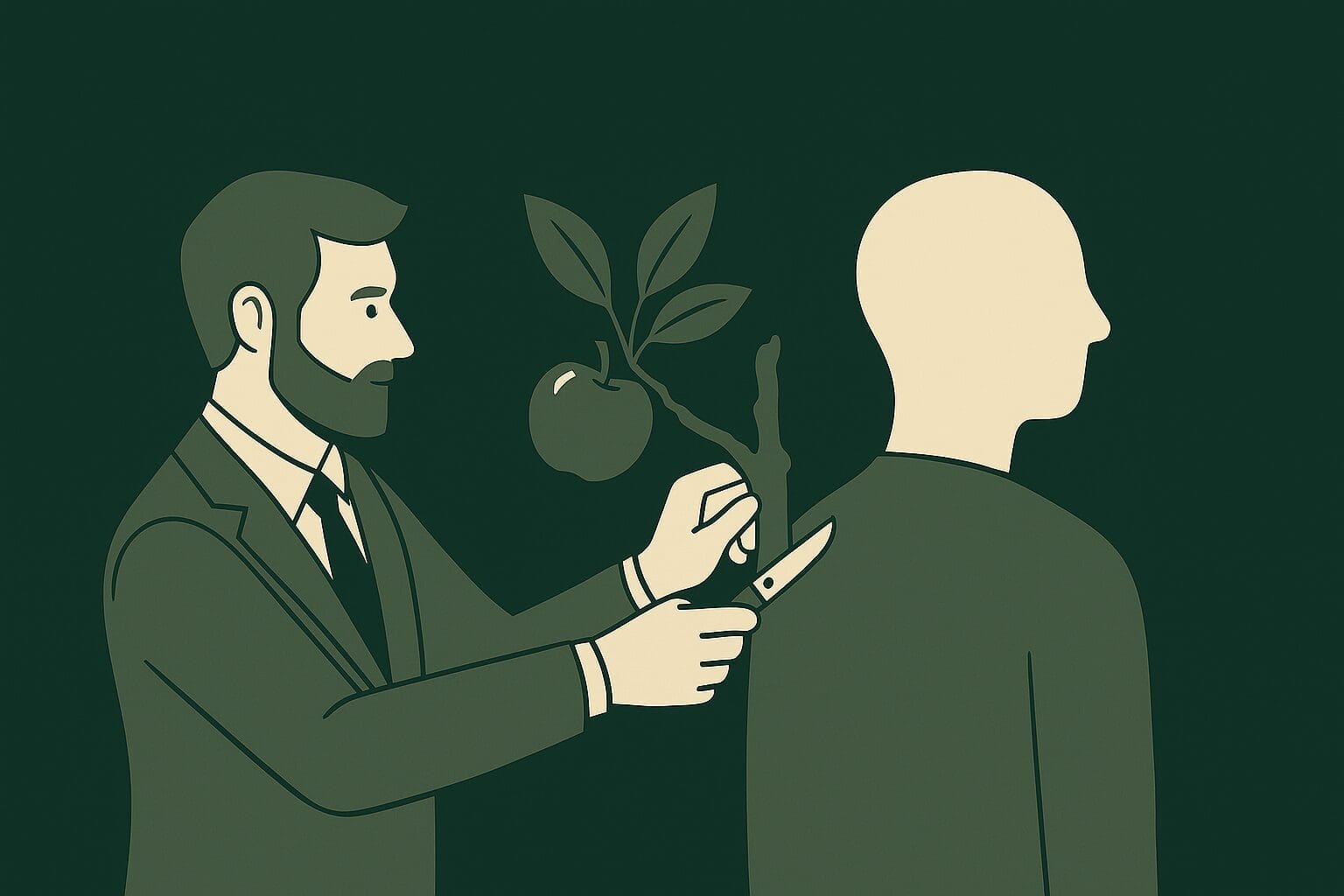In the wild, apples never grow true to type. If you plant a seed from your favourite Honeycrisp apple, what grows from that seed won’t be a Honeycrisp. In fact, it could taste sour, mealy, or oddly sweet. It might not be edible at all. But there’s something remarkable in that: the seed will be unique.
It’s not a flaw in nature’s design. It’s an evolutionary advantage.
Apple trees evolved to be genetically unpredictable. Every apple seed contains a unique mix of traits — the result of recombining genes from both parent trees. That’s why no two apple seeds grow the same. This creates trees that can survive pests, drought, or disease. This genetic chaos gives apples their greatest strength: adaptability. And yet, when humans wanted consistency, we found a workaround: grafting. We clone one perfect apple (like a Honeycrisp) by cutting a branch and grafting it onto a new rootstock. It guarantees uniformity. But there’s a catch: grafted trees can’t adapt. If a disease hits one Honeycrisp, it hits them all.
Sound familiar?
In many organizations, we often treat people in the same way, even though we are genetically wired to be different.
The Grafting Mentality in Leadership
We identify a “star performer” or an “ideal employee” and then try to clone them across the team. We create rigid expectations, fixed job descriptions, and onboarding manuals that essentially say: “Be like this.”
We graft people into roles.
It’s efficient — but it’s brittle.
When we force sameness, we lose the very thing that makes a team strong in complex, high-
pressure environments: diversity of thought, skill, and style.
Leadership Needs Recombination, Not Replication
In nature, sameness is a death sentence. In leadership, it’s a missed opportunity.
When we embrace difference, what biologists call genetic recombination, we create teams that are resilient, adaptive, and capable of navigating unexpected challenges. Diversity isn’t a liability to be managed; it’s an asset to be leveraged. It’s a strategic advantage to be
cultivated.
Psychologist Scott Page calls this the Diversity Bonus: the idea that teams with varied backgrounds and cognitive styles outperform more uniform, high-ability teams. Why? Because they see problems differently. They bring different assumptions, heuristics, and blind spots to the table. That friction? It’s where innovation happens.
So, What Can Leaders Do?
We don’t need to throw out structure — but we do need to rethink how we build it.
Here’s how to lead for recombination, not replication:
- Design roles that flex to individual strengths rather than forcing people into rigid boxes.
- Ask questions like: “What unique contribution might this person bring?” instead of “How do I get them to do it like so-and-so?”
- Reward difference — especially when it challenges the norm and creates healthy friction. Invest in psychological safety so people feel secure in bringing their whole, diverse selves to the table.
- Calibrate your systems, but let your people grow wild.
At All Around Performance, we believe leadership isn’t about control. It’s about cultivating trust, adaptability, and belief in others. Just like nature, the strength of your team doesn’t come from sameness. It comes from diversity, deeply rooted, wildly alive.
👤 About the Author
This article was written by Justin Yaassoub, Founder of All Around Performance and a decorated Special Forces veteran. Drawing on a career of high-stakes leadership in both military and corporate environments, Justin helps leaders evolve their mindset, elevate their influence, and guide the next generation with clarity and courage.
👉 Explore our services
📩 Contact our team
📣 Follow us on LinkedIn
